|


256-bit encryption
$500,000 protection

|
AIRCRAFT CARRIER MODELS
An aircraft carrier is considered the most valuable
sea-based asset.
Considering that the earth is covered mostly by water
and that a major portion of the population lives within
100 miles of the sea, as a floating airbase, an aircraft
carrier can do much but does not have the problems
linked to the diplomatic authorizations necessary to
operate from a land airport abroad, and the clearances
to overfly other countries’ airspace. An aircraft
carrier is an autonomous
microcosm, as it has everything needed to operate
internally, from food to fuel, from ordnance to
supplies, and is therefore capable to express the
maximum of its capabilities from the very first day of
intervention.
When you shop for an
aircraft carrier model,
be careful with the phrase
"museum quality" which is overused by mediocre builders. Here
are some things to look at:
1/Hull: ship hull presents a
considerable challenge to a mediocre builder because
half of it, being submerged, does not show.
The stern is the most difficult to build and some builders are
very reluctant to show it.
2/Weapons and radars: many
aircraft carrier
models miss MK38 and CWIS
guns. Their radars have
incorrect shapes and colors.
3/Fine details: do not
assume that a model that looks good from afar (small photos) has beautiful
small
details. Those who are not very proud of their fine
parts seldom show their
models in
close-up photos.
It takes much more time to
produce a premium
aircraft carrier
model than a mediocre one.
An accurate model requires not only time but also top artists.
We hope that when you look at the beautiful models below, you will
see our extraordinary
skills, our passion,
and our research prowess. With
the help of many distinguished individuals,
ModelShipMaster
proudly
produces works of art.
Please note that the aircraft are not
fixed onto the deck and can be arranged creatively by you.
|
|
HMS Ark Royal
The world's
first aircraft
carrier.
|
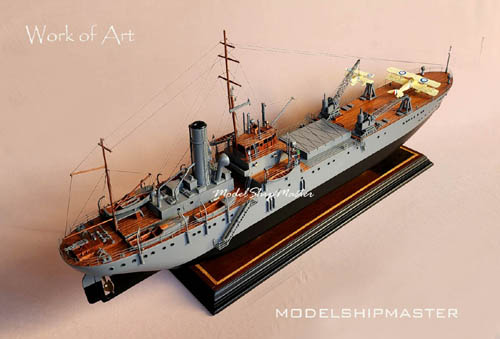
|
|
|
USS
Constellation
One
of the fastest ships in the Navy. Known
officially as "America's Flagship".
|
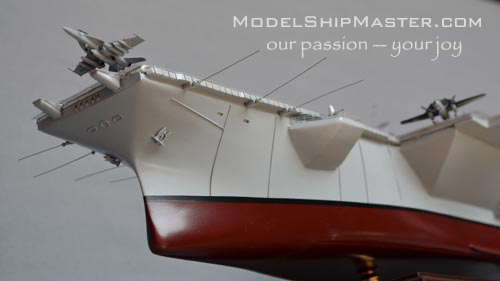
|
|
|
USS Forrestal
(CV-59)
The Navy's first 'super' aircraft Carrier and a Game
Changer.
The first aircraft carrier with an angled flight deck, steam
catapult, and an optical landing system.
|
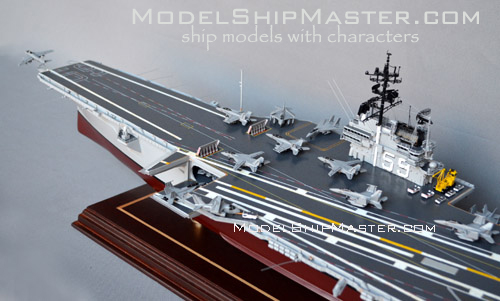 |
|
|
USS Midway
The first aircraft carrier that employed steel flight
deck.
|
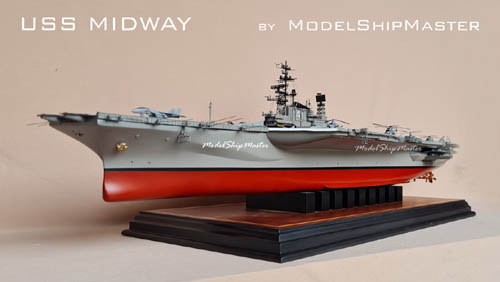
|
|
|
Wasp class
amphibious assault carrier
|
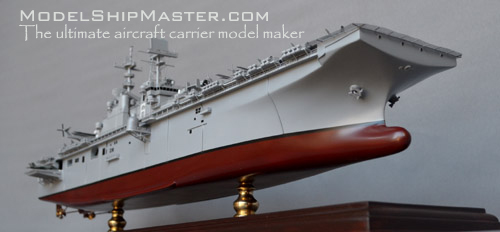
|
|
|
USS America (LHA-6)
Flagship
of an expeditionary strike group, carrying part of a
Marine expeditionary unit with helicopters and V-22
Osprey, supported by F-35 and helicopter gunships. |
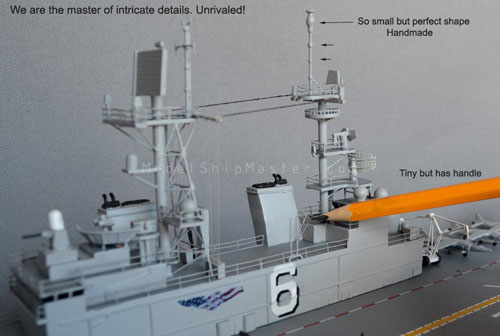
|
|
|
USS
Gerald Ford
|
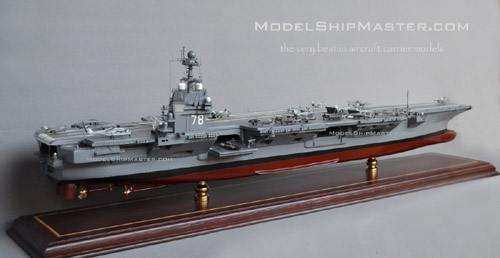
|
|
|
USS Nimitz
CVN-68
A
flagship carrier with more than four decades of
service. A ship that well deserves good attention.
|
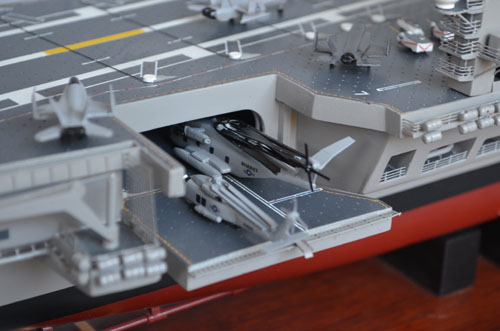
|
|
|
USS
Theodore Roosevelt
The first
aircraft carrier to be assembled using modular
construction
|
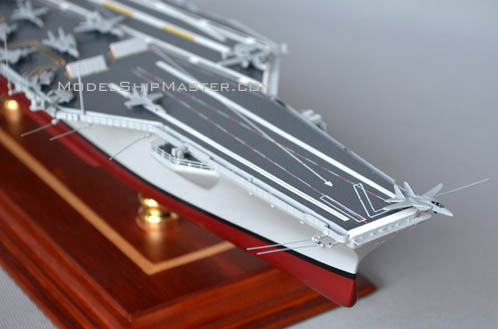
|
|
|
USS Oriskany
|

|
|
|
HMS Queen
Elizabeth
|
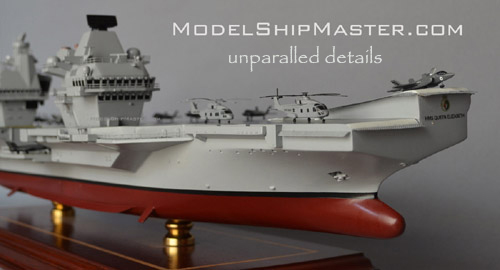
|
|
|
HMS Hermes
|
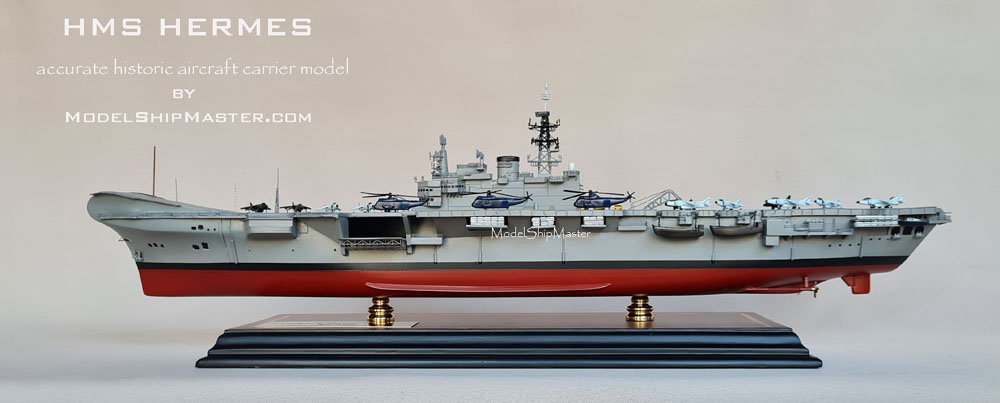
|
|
|
HMS Argus
The world's first aircraft
carrier built.
The
first full-length flat deck.
|
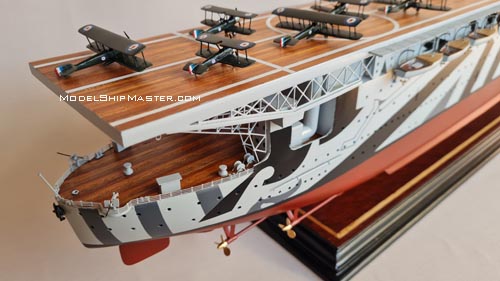 |
|
|
USS Gambier Bay
|
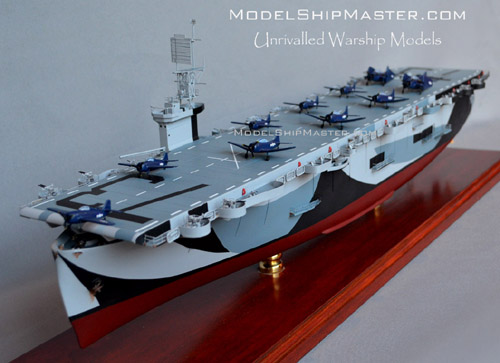
|
|
|
USS Enterprise CV-6
First design that had hangar
deck that doubled the number of planes carried.
First
American ship to sink a full-sized enemy warship.
20 battle stars in World War II.
|
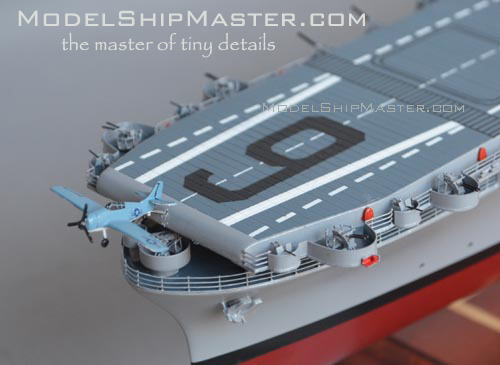 |
|
|
USS Lexington (CV-2)
First
aircraft carrier
battle in history. Also the first in which opposing ships never came within sight of
each other. |
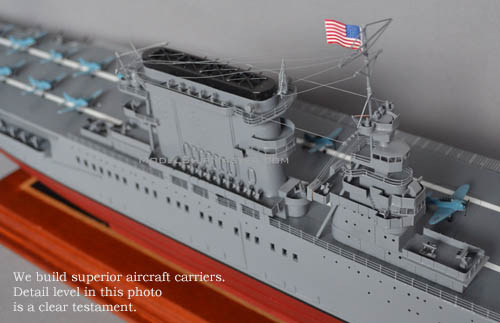
|
|
|
Akagi
An
accurate and beautiful Japanese aircraft carrier
model.
|
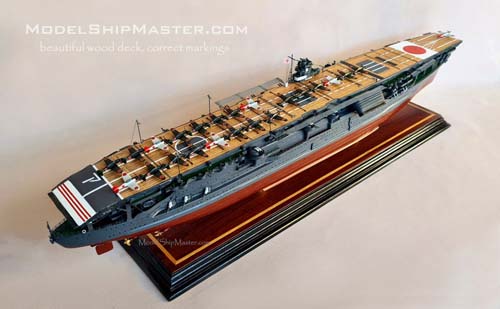 |
|
|
Hosho
The first aircraft
carrier in action.
|
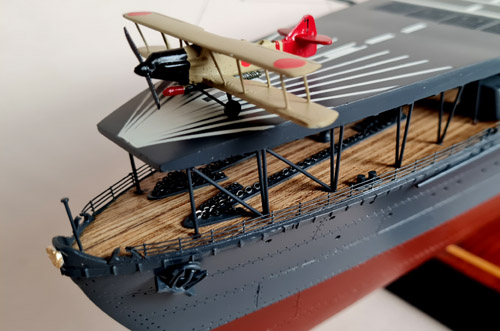 |
|
|
USS Langley
The very first aircraft carrier of the US Navy.
Of those aviators who served aboard Langley,
five became rear admirals, four became vice admirals
and four became four-star admirals. |
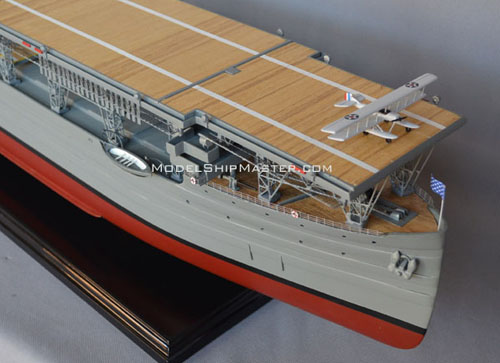 |
|
|
Mistral class
|
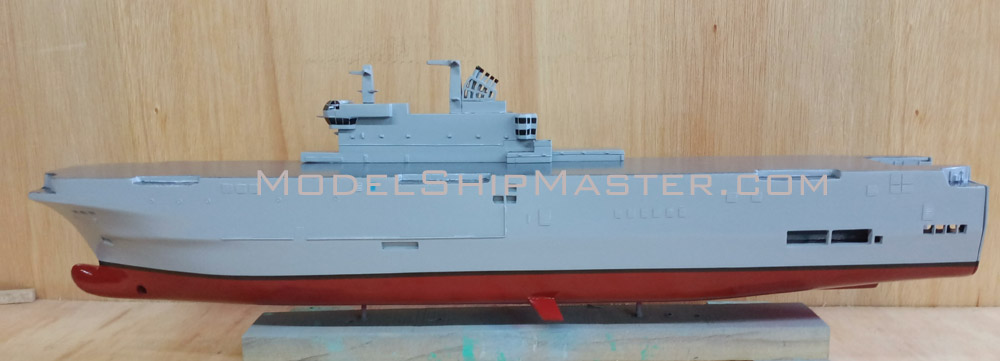 |
|
|
Essex
class aircraft carrier
|
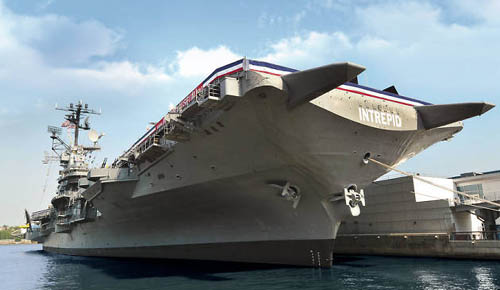 |
|
|
USS North
Carolina (ACR-12)
The
first ship in history to launch an aircraft using
a catapult
|

|
|
|
While
expensive to buy and operate, aircraft carriers may be
ultimately less expensive and far more flexible than
deploying and sustaining land-based air assets to an
available friendly host nation, and therefore well worth
the investment. Based on
the capabilities to support the launch and recovery of
fixed-wing assets, aircraft carriers can be categorized
into three groups:
The
CATOBAR aircraft carriers (Catapulted Assisted Taken Off Barrier Arrested
Recovery): these units, equipped with nuclear propulsion and a
flat-deck with a catapult launching system, ensure
exceptional autonomy and represent fully-capable
floating military airbases that can be deployed for long
periods at great distances from their motherland. This
group includes the US Navy super-carriers of the
Nimitz
and
Ford classes.
The STOBAR
aircraft carriers (Short Take-Off Barrier Arrested
Recovery):
utilize conventional propulsion and were all launched
from Ukrainian shipyards of the former Soviet Navy. They
are currently in service within the Russian Navy and the
Chinese People’s Liberation Army Navy.
The STOVL
aircraft
carriers (Short Take-Off and Vertical Landing): capable to support fixed-wing assets operations, are
equipped with conventional propulsion and are in use in
major NATO Navies, namely the Royal UK Navy (HMS Queen
Elizabeth), the Italian Navy, the Spanish Navy, along
with the US Marine Corps’ Landing Helicopter Dock (LHD)
Wasp and Landing Helicopter Assault (LHA)
America Class
units.
Learn
more about aircraft carriers here:
https://en.wikipedia.org/wiki/Aircraft_carrier
|
|
|
|